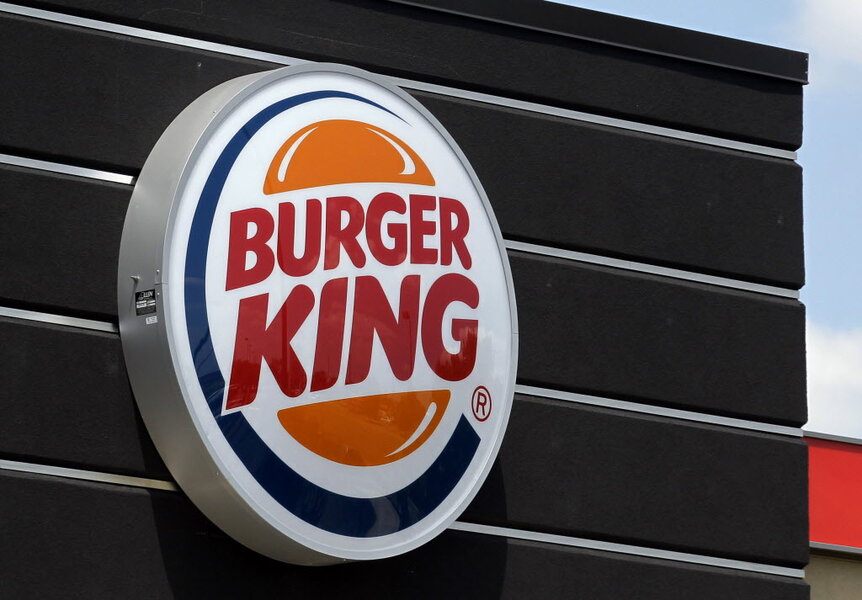Why Burger King brought back chicken fries (featuring One Direction)
Loading...
A social media frenzy may have been responsible for Burger King’s decision last year to bring back a relic of the mid-2000s: chicken fries.
On Tuesday, Associated Press reporter Candice Choi outlined how the combination of a Buzzfeed listicle and a likely erroneous celebrity tweet facilitated the fast food franchise’s decision to resurrect chicken fries, last seen in 2005. The revelation has caused some spectators to ponder how much influence social media has on the eating habits of young Americans longing for novelty from their food choices.
“From curry fries with Sriracha ketchup to quinoa with baked squash and soy chorizo, the millennial generation will eat it," writes Elliot Friar for Mic.com. "But first, they will check into the establishment on Facebook and Foursquare. Then, they’ll take a photo of the dish and Instagram it, tweet it or share it for the world to see. As they begin to eat their now less-hot meal or snack, they will document the progression with a short Vine or Keek made with the applications of the same names."
“Finally, when they have completed the dish, they will leave a review, or should I say reviews, using their smartphone," he continued. "They’ll tweet that the fries were soggy, leave a tip on FourSquare that the quinoa with squash and soy chorizo was the best, give the establishment a thumbs up or down on Urbanspoon and rate it on Yelp. Millennials have become the foodie generation through the use of social media, creating an interconnectedness of food culture."
It's fair to say that Millenials are often nostalgic for the past, even when that past includes decades they may not be old enough to remember. The numerous “90s” themed parties frequented by young adults who were still in diapers during the 1990s belie this phenomenon. So it is no surprise that Buzzfeed’s January 2014 listicle “35 Foods from Your Childhood that Are Now Extinct” succeeded in rekindling an interest in some of the old-school fare listed. In addition to the chicken fries, the General Mills cereal French Toast Crunch made a comeback in January 2015, and Surge soda is set to hit the shelves once again in September.
Chicken fries also received an apparent boost after Liam Payne, a member of the superstar boy band One Direction and thereby a walking Twitter trending topic, tweeted, "I'm so fulllllll!!! Think I just ate my body weight in chicken fries and sides owwwwww."
Chicken fries, Ms. Choi points out, weren't available at the time, which "raises the possibility that Payne just left out a comma, and meant to say he ate chicken and fries — not chicken fries." Grammatical error or no, Burger King began testing chicken fries on menus again in summer 2014. The tryout was so successful they were added to the permanent menu nationwide this past March.
While the timing of these comebacks could be coincidental, research suggests that social media may have a more far-reaching impact on the food choices of Americans than we realize. According to a report by the consumer market research and consulting organization the Hartman Group, social media is the new food broadcasting network. Fifty-four percent of Americans use social media to discover and share their food experiences, the report finds, while 42 percent use social media to get advice about food, and 39 percent use social media when eating alone.
That adds up to 82.3 million Americans who learn about food via a social network and 67.2 million Americans who learn about food via a website, blog, or app. With this sort of reach, the effects of social media on eating habits cannot be underestimated, researchers say.
“Ever more resourceful and self-reliant consumers use information from trusted blogs, tweets, promotions and online reviews for ideas, inspiration and the reassurance to try new things. Fully 65% of women are a friend or fan of a brand on Facebook,” wrote psychology professor Kit Yarrow for Psychology Today in 2012.
“McKinsey research has found that ⅔ of what shoppers learn about products today is driven by the consumer, not the seller. This moves new products more quickly into mainstream usage,” she added.
And social media’s reach into the food industry could have the added benefit of making our eating habits safer, observers say.
“The WHO has discussed using social media like Twitter as a tool to track food-borne illnesses, and many food and beverage brands have embraced Facebook and other social media as a method of building consumer trust in their brand,” a post the Organic Authority website reads.
“Studies show that big food corporations have realized that they have to be honest with consumers online in ways that they never had to before; fudge the truth even a little bit, and people online are apt to call you out on it,” it added.
Still, as Ms. Choi pointed out in her piece, it’s possible Burger King would have brought back chicken fries even without the social media support.
“Since being taken over by investment firm 3G Capital, the chain has leaned heavily on its past for ideas. In addition the King and Subservient Chicken characters, it has resurrected its Big King sandwich and Yumbo ham sandwich,” she writes.
Whether the decision to bring back the chicken fry was more a simple nod to nostalgia or the result of online enthusiasm is hard to determine. But the social media rallying cry couldn’t have discouraged the company from rolling out the fries with the unique bite Millenials are known to love best.
"Fiery Chicken Fries," a new variety will be available starting Tuesday with what Burger King calls “a marinade of cayenne pepper black pepper and other savory spices that will make your mouth cry."






